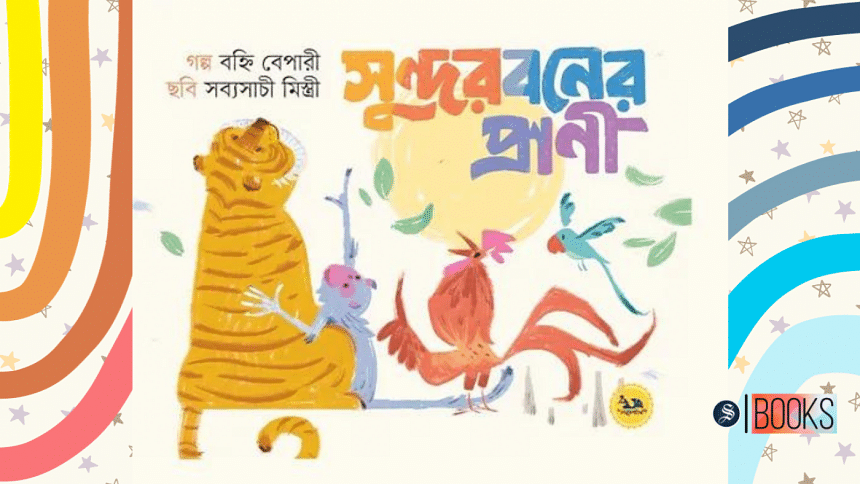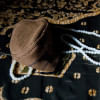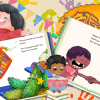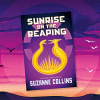Witnessing the council of animals in the Sundarbans

The worst thing I endure as a sucker for picture books is knowing that no matter how many such books I get my hands on, they will never be enough. Yet, I cannot thank the entire team of Mayurpankhi for working on books that cater to brilliant young minds with blooming thoughts. Although it was not age-appropriate for my own preschooler (too young), she loved the images and I certainly enjoyed reading Mayurpankhi publication's latest, which will immediately transport you to the anthropomorphic world of Orwell's infamous Animal Farm.
Aimed to entertain young children aged five to eight, Sundarbaner Prani (Sundarban's Animal), is authored by Bohni Bepari and illustrated by Sabyasachi Mistry. A narrative that spans over 20 pages, the book starts with the scene of a kingfisher and the junglefowl upset with each other, disputing over their hunting endeavours beside the Pasur River in the Sundarbans.
The mention of animals belonging to different habitats was a new concept for my soon-to-be 4-year-old, who is well acquainted with most animals, if not all. The book describes different habitats and their inhabitants that encompass the land, water, and sky. It describes accurately the home that belongs to a diverse range of aerial, arboreal, aquatic, and terrestrial animals.
As you turn the pages and move along the storyline, you immerse yourself in the blame game of the animals. A whodunit plot minus the murder. The plot gains momentum when a chitra horin (spotted deer) is running towards the kingfisher and the junglefowl. The birds stop the deer and ask for the reason, who answers without wasting time that it is the tiger. The junglefowl, Bonbibi's favourite, in an authoritative tone asks the deer to sit down and tell them what has been going on. Though this land is a safe haven for all, the deer was annoyed at the government for wanting to conserve the tigers. This policy has only made them haughtier. In that instance, the tiger arrives and when accused upfront, blames it on the bee, who in turn blames it on the notorious monkey. By the time they confronted the monkey, it was pestering the red crabs. When asserted, he blames it all on the parrot. Yet, the animals need not look for the parrot, because upon seeing a gathering, it flies towards them out of curiosity. It is already on edge, considering how pesticides have ruined their food choices and the flamingo ate the fruit it was aiming for, as the otters ate the fish, the flamingo's desired choice of food. The otter instead was bitten by the crocodile, who complains that whenever it goes to the river for drinking water, the deer pokes them, which sends him into a state of fury.
And the whole blame game ends in a loop. But it doesn't stop there, in a way, the accountability falls upon the humans and the story ends on a cliffhanger with the group of animals deciding to call upon humans for an explanation.
The protagonists—the kingfisher and the junglefowl—discuss how the Sundarbans is named after the beauty of all the trees that are residents of the land and how they protect us all from disasters that befall on us. They are beings, the trees, who are inspirational and are great teachers of nature.
Interestingly, this book showcases several hunting preferences and opportunities highlighting the fact that the Sundarban forest belongs to all living beings. This is a great way to introduce school-aged children to learn how trees, different animals and us humans are all interconnected, in terms of our food, environment, and practices. The things we do, and the decisions we make impact others in more ways than we can fathom. The discourse promotes the importance and power of confrontation, in other words, freedom of speech. The story weaves around how sublimely they cross-check all accusations as well as the cyclical nature of blame following the accuser and accused.
Mayurpankhi's books have the calibre to engage readers of all ages. This book is not an exception either. The beautiful illustrations were all sketches made with crayons and colour pencils, making the images of the forest pop out in just the right ways.
Salwah Chowdhury is a creative writer, bookworm and a toddler mom who works full-time at an NGO. She loves the rush of thinking, reading, and writing and takes on freelance projects every now and then. Please follow her on Instagram @salwah_chowdhury and share any book recommendations or your thoughts on the article.

 For all latest news, follow The Daily Star's Google News channel.
For all latest news, follow The Daily Star's Google News channel. 










Comments